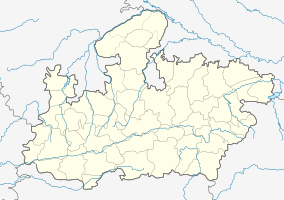Pench National Park
| Pench National Park | |
|---|---|
| पेंच नेशनल पार्क mogli land | |
| Location | Madhya Pradesh, India |
| Nearest city | Seoni |
| Coordinates | 21°40′17.76″N 79°18′11.88″E / 21.6716000°N 79.3033000°ECoordinates: 21°40′17.76″N 79°18′11.88″E / 21.6716000°N 79.3033000°E |
| Established | 1983 |
Pench National Park is in Seoni and Chhindwara districts of Madhya Pradesh in India. It derives its name from the Pench River that flows through the park from north to south dividing the park into almost equal western and eastern halves, the well forested areas of Seoni and Chhindwara districts respectively. It was declared a sanctuary in 1977 but raised to the status of national park in 1983. In 1992, it was established as a tiger reserve. The park is famous for rafting. In 2011, the park won the "Best Management Award". This park is accessible from Pauni on National Highway 7 and has two famous entry gates, Turiya and Karmajhiri.
The area of the present Pench Tiger Reserve has been described in Ain-i-Akbari, and is the setting of Rudyard Kipling's The Jungle Book.
There are 10 villages in the national park, one inside the park (Fulzari) and nine on the periphery.
Pench National Park comprises 758 km2 (293 sq mi), out of which 299 km2 (115 sq mi) form a core, the Pench National Park core area and Mowgli Pench Sanctuary. The remaining 464 km2 (179 sq mi) form the buffer zone.
The protected area is covered with small hills and well-stocked teak mixed forest in the southern reaches of the Satpura Ranges. Elevation ranges from 425 to 620 m (1,394 to 2,034 ft). The temperature varies from 4 °C (39 °F) in December to 42 °C (108 °F) in May. Average rainfall is 1,300 mm (51 in).
The forest cover in the park area includes teak mixed with other species like saja, bijiayasal, lendia, haldu, dhaora, salai, aonla, amaltas. The ground is covered with maze of grasses, plants, bushes and saplings. Bamboo is also found at places. Scattered white kulu trees, also referred to as 'ghost tree', stand out conspicuously among the various hues of green. Another important tree for both wildlife and tribal people of this region is mahua. The flowers of this tree are eaten by mammals and birds, and also harvested by the tribal people as food and to brew beer.
...
Wikipedia

